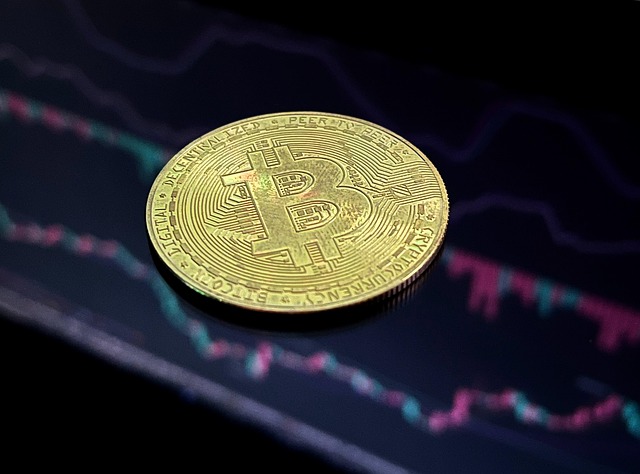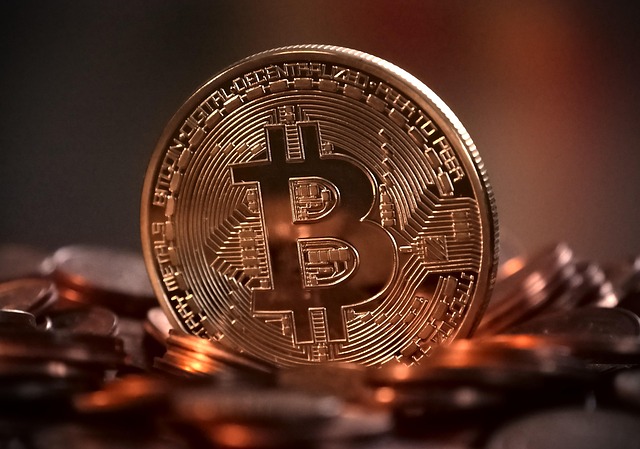Bitcoin death cross still present despite rally to $86K — Should BTC traders be afraid?
On April 6, Bitcoin price formed a death cross on a daily chart — a technical pattern where the 50-day moving average (MA) falls below the 200-day MA. Historically associated with trend reversals and long bearish trading periods, this ominous signal has sometimes preceded major market drawdowns.The latest death cross comes amid growing macroeconomic uncertainty. Equities are reeling from what appears to be the early stages of a tariff war, volatility is rising, and fear continues to dominate investor sentiment. For some investors, Bitcoin’s death cross could be the final blow to hopes of a near-term rally. Early signs of capitulation from short-term holders may already be emerging.Still, not everyone sees doom ahead.Bitcoin death crosses historyBy definition, a death cross confirms the end of a bullish phase. When the 50-day MA drops below the 200-day MA, it suggests recent price action has weakened relative to the longer-term trend. Its counterpart, the golden cross, occurs when the opposite happens — often heralding a new rally.Since its inception, Bitcoin has experienced 10 such death crosses, with the 11th unfolding right now. Analyzing their dates and durations gives a major insight: every bear market included a death cross, but not every death cross has led to a bear market. This distinction is key to understanding the current setup.BTC/USD 1-day death cross history (log). Source: Marie Poteriaieva, TradingViewIndeed, there are two types of death crosses: those that happen during bear markets and the rest. The three death crosses that formed during the bear markets of 2014-2015, 2018, and 2022 were long and painful. They lasted for 9 to 13 months and saw drawdowns between 55% and 68% from the day of the cross to the cycle bottom.The remaining seven were far less severe. They lasted from 1.5 months to 3.5 months and saw Bitcoin decline anywhere from 27% to nothing at all. In many cases, these signals marked local bottoms and were followed by renewed rallies.This brings us to the critical question: Is Bitcoin already in a bear market, or is this another bear trap?A bearish signal?If Bitcoin is indeed in bear territory, as CryptoQuant CEO Ki Young Ju believes, the current death cross could signal 6 to 12 more months of downward price action. This outlook aligns with his observations of the difference between the current market cap and the realized cap (average cost basis for each wallet x amount of BTC held).“If Realized Cap is growing, but Market Cap is stagnant or falling, it means capital is flowing in, but prices aren’t rising—a classic bearish signal.”Current data clearly points to the latter, Ki Young Ju adds.“Sell pressure could ease anytime, but historically, real reversals take at least six months—so a short-term rally seems unlikely.”BTC growth rate difference. Source: CryptoQuantOther market participants disregard the presence of the death cross. Crypto analyst Mister Crypto argued that the current death cross is a setup for a rally rather than a slide. “The trap is set again. This will be the most hated rally of 2025!” he posted alongside a chart showing previous false signals of this cycle.Bitcoin death cross during the bull market. Source: Mister CryptoCoinShares head of research James Butterfill also downplayed the signal’s significance. As he put it, “For those of you that think the Bitcoin death cross means anything – empirically, it’s total nonsense, and in fact, often a good buying opportunity.” Butterfill’s data shows that, on average, Bitcoin prices are only slightly lower one month after a death cross (-3.2%) and often higher three months out.Related: Trump tariffs reignite idea that Bitcoin could outlast US dollarInterestingly, Bitcoin isn’t the only asset flashing warning signs. The Nasdaq 100 and S&P 500 are both on the verge of forming their own death crosses, while individual tech stocks — including Apple, Microsoft, Nvidia, and Alphabet — have already triggered them or are close to doing so. Bitcoin’s recent move is part of a larger market reset, for better or for worse. At the moment, however, it leans more toward the “worse” side: as some analysts point out, what’s bad for the Nasdaq tends to be bad for Bitcoin, too. Unless, of course, Bitcoin fully claims its role as digital gold.This article does not contain investment advice or recommendations. Every investment and trading move involves risk, and readers should conduct their own research when making a decision.
Mantra and Terra Luna: Nothing in common but a token crash
The recent collapse of the Mantra (OM) token triggered comparisons to the infamous Terra ecosystem crash in May 2022, with some commentators referring to Mantra as the “next Terra.” Still, many in the community argue that the two projects share nothing in common besides visual similarities in price charts.“While it’s tempting to draw parallels between OM’s recent crash and the Terra Luna collapse, they’re fundamentally very different events,” said Ben Yorke, vice president of ecosystem at the decentralized finance (DeFi) project Woo, in a statement to Cointelegraph.Alexis Sirkia, chairman of the DeFi infrastructure project Yellow Network, agreed. “There are no real similarities apart from the visual of the price dropping,” he said.Visual similarity — different numbersMantra’s OM token dropped 92% on April 13, dropping from over $6 to around $0.52 within hours. According to data from CoinGecko, OM lost $5.4 billion in market capitalization in less than four hours.By contrast, TerraClassicUSD (formerly UST) took five days to lose a similar percentage, shedding $17.2 billion.Mantra’s OM crash in April 2025 versus USTC (formerly UST) crash in May 2022 (seven-day chart). Source: CoinGeckoThe LUNA crash was more gradual than both the OM token and USTC. It started plummeting some time before the UST token depegged on May 9, 2022.Still, the visual resemblance of the price charts has prompted comparisons among observers, despite significant structural differences between the projects.Terra collapse was systemic in contrast to MantraWoo’s Yorke and Yellow Network’s Sirkia agreed that Terra’s collapse was systemic and occurred due to the failure of its algorithmic stablecoin, while Mantra was not proven to be subject to any systemic flaws.“OM appears to be more of a case of mismanagement or negligence,” Yorke said, adding that the Mantra crash involved a “large number of insider-held tokens” moved to exchanges, which sparked cascading liquidations.Source: ZachXBT“The issue wasn’t a structural flaw in the protocol, but rather a breakdown in token handling and trust,” he noted.Related: Mantra CEO says OM token recovery ‘primary concern’ but in early stages“Mantra is not broken. There was no peg to fail. This is a market structure issue, not a protocol failure,” Sirkia stated, stressing that only an event like a smart contract failure could indicate a serious issue in the protocol. He added:“Terra collapsed because of how it was built. Mantra went through a market-driven correction. The team remained transparent throughout. After the drop, OM bounced over 200%, showing real demand and community belief. That kind of recovery never happened with Luna.”Yorke and Sirkia’s Mantra comments mark the second day after the OM crash, with the token slightly recovering to $0.80 by publishing time after a brutal sell-off from above $6 to $0.50 per token on April 13.According to the latest update by Mantra CEO John Mullin, Mantra expects to share a post-mortem report detailing the events leading to the crash of the OM token in the next 24 hours.Magazine: Illegal arcade disguised as … a fake Bitcoin mine? Soldier scams in China: Asia Express
Bitcoin shows growing strength during market downturn — Wintermute
Bitcoin is showing growing resilience to macroeconomic headwinds compared with traditional financial markets, according to an April 14 report from crypto market maker Wintermute.The report noted that Bitcoin (BTC) has held up relatively well during the ongoing market downturn, even as the S&P 500 and Nasdaq dropped to their lowest levels in a year and bond yields surged to highs that had not been seen since 2007.“Bitcoin’s decline was comparatively modest, revisiting price levels from around the US election period,“ Wintermute wrote.According to Wintermute, “This marks a notable shift from its historical behavior in crisis situations.” In the past, Bitcoin’s losses were considerably greater than those of traditional finance indexes. The shift highlights Bitcoin’s “apparent growing resilience amid macroeconomic turbulence.“Founder of Obchakevich Research, Alex Obchakevich, told Cointelegraph that he expects this to be a temporary trend:“As the trade war intensifies, Bitcoin may return to the list of risky assets. Because investors will most likely look for salvation in gold.“Obchakevich said that factors that caused the stability of Bitcoin were growing institutional interest through exchange-traded funds (ETFs) and the promotion of Bitcoin as digital gold due to its decentralization and independence.Related: Bitcoin traders target $90K as apparent tariff exemptions ease US Treasury yieldsA change in Bitcoin market dynamicsOver the past week, Bitcoin’s price increased by 7% to $83,700 — later reaching nearly $86,000 at the time of publication. This growth occurred as the Consumer Price Index (CPI) rose by 2.4% year-over-year, with a month-over-month decline of 0.1% — the first monthly decrease since May 2020. This signals that inflation is cooling off.Year-over-year CPI percentage change. Source: US Bureau of Labor StatisticsFurthermore, the Producer Price Index (PPI) rose 2.7% year-over-year in March. The same metric stood at 3.2% in February, also showing signs of disinflationary pressures. Still, according to Wintermute, the trend may soon reverse:“Despite this progress toward the Fed’s 2% inflation target, the recent escalation in global trade tensions introduced new potential inflationary risks, which are not yet reflected in March’s data.”Monthly PPI percentage change. Source: US Bureau of Labor StatisticsRelated: Trade wars could spur governments to embrace Web3 — TruebitMore market turmoil expectedBitwise analyst Jeff Park recently argued that US President Donald Trump’s trade policies will create worldwide macroeconomic turmoil and short-term financial crises that will ultimately lead to greater adoption of Bitcoin. He said that we should expect an inflation increase:“The tariff costs, most likely through higher inflation, will be shared by both the US and trading partners, but the relative impact will be much heavier on foreigners. These countries will then have to find a way to fend off their weak growth issues.”Wintermute explained that the ongoing trade war heightens the risk of increased inflation and economic slowdown. Prediction market Kalshi traders recently placed the odds of a recession hitting the US this year at 61%, and JPMorgan sees a 60% likelihood.Magazine: Bitcoin eyes $100K by June, Shaq to settle NFT lawsuit, and more: Hodler’s Digest, April 6 – 12
Bitcoin held by publicly listed firms climbs 16% in Q1: Bitwise
The amount of Bitcoin held on the books of publicly traded companies rose by 16.1% in the first quarter of 2025, according to crypto fund issuer Bitwise.Total company Bitcoin (BTC) holdings rose to around 688,000 BTC by the end of Q1, with firms adding 95,431 BTC over the quarter, Bitwise reported in an April 14 X post.The value of the combined Bitcoin stacks rose around 2.2%, reaching a total combined value of $56.7 billion with a price per BTC of $82,445, the firm added.Source: BitwiseBitwise noted that the number of public companies holding Bitcoin rose to 79, with 12 firms buying the cryptocurrency for the first time in Q1.The largest first-time Bitcoin buyer was the Hong Kong construction firm Ming Shing, whose subsidiary Lead Benefit bought a total of 833 BTC over the quarter, with an initial 500 BTC buy in January and a follow-up 333 BTC buy in February.The next largest maiden Bitcoin holder was the far-right favored YouTube alternative Rumble, which bought 188 BTC in mid-March.One notable debut Bitcoin buyer was the Hong Kong investment firm HK Asia Holdings Limited, which only purchased a single Bitcoin in February, but the announcement caused its share price to nearly double in value in a single trading day.Metaplanet buys the dip with 319 Bitcoin scoopMeanwhile, Japanese investment firm Metaplanet said in an April 14 note that it purchased another 319 Bitcoin for an average price of 11.8 million yen ($82,770) per coin, bringing its total holdings to 4,525 Bitcoin, currently worth $383.2 million.However, the company has spent a total of 58.145 billion yen, nearly $406 million, buying up its current Bitcoin stack.Metaplanet (3350) was down 0.5% by the April 15 lunch break on the Tokyo Stock Exchange after closing trading on April 14 up 3.71%, according to Google Finance.Metaplanet opened the April 15 trading day flat after disclosing a Bitcoin buy the day before. Source: Google FinanceThe Tokyo-based firm’s latest Bitcoin buy puts it firmly in tenth place among the world’s largest public companies holding Bitcoin, trailing behind Jack Dorsey’s Block, Inc., which holds 8,485 BTC, according to Coinkite data.Bitcoin is trading around $84,440 and has traded flat over the past 24 hours, according to CoinGecko. It’s up around 2.3% since the end of Q1 on March 31, having clawed back from a low of under $75,000 on April 7 after a wider market drop due to a round of fresh global tariffs imposed by the US.Asia Express: Bitcoiner sex trap extortion? BTS firm’s blockchain disaster
‘Bitcoin Standard’ author to develop Austrian economics curriculum for UK school
Lomond School, a private institution in Scotland, will begin accepting Bitcoin for tuition payments and is collaborating with Bitcoin author Saifedean Ammous to introduce a new curriculum focused on Bitcoin and Austrian economics. Ammous, author of The Bitcoin Standard, is developing an educational curriculum combining the principles of Bitcoin (BTC) and Austrian economics.“I’m going to be working with Lomond School to develop a curriculum for bitcoin and Austrian economics,” Ammous wrote in an April 12 X post, sharing his excitement for “making the material widely available worldwide.”Source: Saifedean AmmousLomond School Principal Claire Chisholm confirmed the collaboration on April 12, writing that she was “thrilled to be working with Dr. Ammous” and appreciative of the “positivity of the Bitcoin community.”The news comes a day after Lomond School announced it would accept BTC for tuition payments starting from the autumn semester of 2025, becoming the first school in the United Kingdom to adopt BTC payments.Source: Saifedean AmmousAmmous is best known for The Bitcoin Standard, which was first published in 2018. The book outlines the economic philosophy behind Bitcoin and contrasts it with fiat currency systems. It has sold more than one million copies and has been translated into 38 languages, according to Ammous.Cointelegraph has contacted both Ammous and Lomond School for additional details regarding the upcoming curriculum.Related: New York bill proposes legalizing Bitcoin, crypto for state paymentsBitcoin education is gaining momentum worldwideEducational institutions around the world have increasingly embraced Bitcoin as both a subject of academic study and a financial tool.Schools and universities have been launching Bitcoin-based courses since as early as 2013 when the University of Nicosia in Cyprus launched its Master’s in Digital Currency program, which is accessible both in-person and online.New York University’s Stern School of Business launched “The Law and Business of Bitcoin and Other Cryptocurrencies” course in 2014 — one of the first Bitcoin-specific courses in the US.Stanford University also launched its “Bitcoin and Cryptocurrencies” course in 2015, focused on the technological and economic aspects of the world’s first cryptocurrency.Related: Swedish MP proposes Bitcoin reserve to finance ministerIn February 2025, the University of Austin announced launching the first first-of-its-kind Bitcoin investment fund of over $5 million as part of the institution’s larger $200 million endowment fund.Source: Eric BalchunasThree months before the University of Austin’s announcement, a regulatory filing revealed that Emory University accumulated over $15 million worth of Bitcoin via Grayscale’s spot Bitcoin exchange-traded fund, Cointelegraph reported on Oct. 28.Magazine: SCB tips $500K BTC, SEC delays Ether ETF options, and more: Hodler’s Digest, Feb. 23 –March. 1
Scotland's Lomond School accepts Bitcoin for tuition payments, a first in the UK
The Lomond School in Scotland will accept Bitcoin (BTC) tuition payments beginning in the Autumn semester of 2025, making it the first school in the United Kingdom to do so.Accepting Bitcoin is part of the school’s plan to integrate “sound money principles” from the Austrian School of Economics into the curriculum to “prepare students for the uncertain future,” the announcement reads, adding:”Bitcoin is available to anyone willing to learn — making it more democratic and inclusive, particularly for people in developing nations who lack access to traditional banking. Lomond sees Bitcoin as a perfect real-world case study in economics, computing, ethics, and innovation.”The school has no plans to accept other cryptocurrencies, and will convert the BTC to fiat currency immediately, according to the announcement. It might establish a BTC treasury in the future, pending input from the Lomond community.Lomond’s announcement highlights the growing tide of institutions adopting Bitcoin as a hedge against inflation amid turmoil in the global financial order.Value of the British pound (GBP) 1209-2025. Source: StatistaRelated: Swedish MP proposes Bitcoin reserve to finance ministerBitcoin slowly makes its way through the education systemBitcoin is now part of the curriculum in several schools and universities; some of these institutions have also adopted a BTC treasury strategy to protect reserves against the corrosive effects of inflation on purchasing power.In 2022, the University of Cincinnati added crypto courses to its curriculum to teach students about BTC and emerging Web3 technologies.Mi Primer Bitcoin, a Bitcoin education initiative, partnered with the Ministry of Education in El Salvador in 2023 to integrate Bitcoin education into the school system.Visual of Bitcoin’s hard supply cap expressed through successive halving events. Source: RiverThe University of Wyoming launched the Bitcoin Research Institute in July 2024 to conduct peer-reviewed academic studies about the decentralized digital asset.In February 2025, the University of Austin announced that its endowment fund allocated $5 million to BTC investments. The university’s endowment fund has approximately $200 million in assets under management.Chun Lai, the endowment fund’s chief investment officer, said the fund wanted BTC exposure to capitalize on the financial upside of digital assets as crypto experiences increased institutional adoption.Magazine: TradFi fans ignored Lyn Alden’s BTC tip — Now she says it’ll hit 7 figures: X Hall of Flame
Speculation is DeFi’s double-edged sword
Opinion by: Billy Campana, contract developer, Api3 Speculation is a cornerstone of price discovery for traditional finance institutions like hedge funds and major banks and plays an essential role in their day-to-day operations. It is the mechanism by which they can establish reliable valuations for everything, ranging from simple stocks and bonds to complex derivatives and structured products. While decentralized finance (DeFi) is often criticized for its speculative “casino” nature, this is, in reality, one of its strengths: making practices like arbitrage more accessible to everyone and empowering individuals to participate in opportunities once out of reachDeFi’s volatilityCritics have highlighted DeFi’s extreme volatility, a concern exemplified by Ether’s (ETH) recent 15% price drop that triggered over $100 million in long position liquidations. These dramatic market movements continually test market resilience and investor confidence in the ecosystem. The accusations that DeFi platforms function essentially as gambling venues persist throughout the industry. Such criticisms have gained further traction following several high-profile memecoin crashes that collectively erased over $46 billion in market value, revealing the systemic vulnerabilities that speculative activities can introduce to the broader ecosystem.Additionally, the recent Bybit hack spotlighted the major security concerns, exposing critical vulnerabilities within DeFi infrastructure and triggering intense scrutiny of the sector’s security protocols. These systemic risks have only escalated institutional skepticism, resulting in increasingly vocal calls for greater transparency and comprehensive regulatory oversight. Simultaneously, the media narrative surrounding DeFi remains overwhelmingly focused on its spectacular failures, growing institutional skepticism and persistent market instability. This one-sided portrayal continues challenging DeFi’s credibility as a serious financial ecosystem capable of responsible innovation.Evening the playing fieldCritics consistently miss that DeFi democratizes the same speculative mechanisms that traditional finance has always employed for price discovery. The fundamental difference is that Wall Street gatekeepers no longer control who benefits from these opportunities. While traditional finance has historically restricted arbitrage opportunities to institutional players with privileged access, DeFi effectively removes these gatekeepers, allowing anyone with an internet connection to participate in the price discovery process that hedge funds and banks have monopolized for decades.Smart contracts have revolutionized financial operations that once required privileged access and teams of highly paid professionals. Smart contracts effectively break down the artificial barriers that have systematically kept ordinary people out of sophisticated markets. Recent: Bitwise makes first institutional DeFi allocationLeading financial institutions increasingly recognize this paradigm shift, with established businesses progressively adopting DeFi mechanisms to automate transactions and enhance operational efficiency. Institutional adoption validates speculation as a legitimate financial practice rather than dismissing it as mere gambling.An arbitrage utopiaThis unprecedented democratization manifests concretely in decentralized lending platforms that enable automated market makers (AMMs), enabling anyone to provide liquidity and earn fees previously reserved exclusively for institutional market makers with significant capital reserves. With unprecedented data transparency across blockchain networks, even uncollateralized crypto loans can enable capital-efficient arbitrage opportunities spanning multiple blockchain ecosystems without requiring the millions in upfront collateral that traditional finance demands from participants. As institutional involvement continues to grow and regulatory frameworks gradually mature, these speculative mechanisms steadily evolve toward the same legitimacy traditional finance instruments enjoy. This evolution reveals that speculation itself was never the problem — the exclusionary access to its benefits was. The practical execution of this democratized speculation includes cross-exchange arbitrage through DeFi aggregators, crosschain bridges that naturally equalize asset prices across different blockchains and automated liquidation mechanisms that maintain system solvency. All these components serve the same fundamental purpose as traditional financial instruments but with radically expanded access for participants worldwide.As institutional investors and traditional financial markets return their gaze to the industry, with increased involvement from regulatory bodies and political figures in the US, DeFi must remember its core value proposition. The actual value of DeFi is not in recreating the current structures that allow the powerful to benefit from methods that regular people don’t have access to but in making these opaque systems transparent and open to everyone.Rather than apologizing for speculation, the industry should embrace and refine it as its revolutionary tool — one that brings financial opportunities to billions systematically excluded from traditional markets. Innovation in DeFi isn’t just technological; it is also social, creating a financial system where opportunity isn’t determined by privilege but by insight, creativity and willingness to participate. The future belongs not to those who can eliminate speculation but to those who can make it fair, transparent and accessible to all.Opinion by: Billy Campana, contract developer, Api3This article is for general information purposes and is not intended to be and should not be taken as legal or investment advice. The views, thoughts, and opinions expressed here are the author’s alone and do not necessarily reflect or represent the views and opinions of Cointelegraph.
NY attorney general urges Congress to keep pensions crypto-free — ‘No intrinsic value’
New York Attorney General Letitia James has sent a letter to US congressional leaders urging “common sense” federal crypto regulations and to keep digital assets out of US pensions.“I am urging Congress to pass legislation that would strengthen federal regulations on the cryptocurrency industry to protect investors, strengthen financial markets, and stop fraud,” James said in a 14-page letter shared on April 10, outlining six major risks if the sector remains unregulated.She said that without appropriate safeguards, the “unchecked proliferation of digital assets” undermines US dollar dominance, weakens national security due to criminal activity, and “undermines the stability of financial markets.” Unregulated crypto also subjects investors to “price manipulation and rigged markets,” facilitates fraud that “drains billions of dollars from hardworking Americans, and extracts assets and investments from the American economy,” she said. An excerpt of James’ letter to Congress. Source: Office of the New York State Attorney GeneralJames made a number of recommendations and pushed Congress for legislation that would require stablecoin issuers to have a US presence and regulatory oversight and mandate backing stablecoins with US dollars or treasuries. She also wants regulations that require platforms to work only with anti-money laundering-compliant entities, establish registration requirements for issuers and intermediaries, protect against conflicts of interest and promote price transparency and require fraud prevention measures.No crypto assets in pension funds The New York’s top lawyer also aired her concerns about including crypto in pension funds. “Digital assets are uniquely unsuitable for retirement savings due to their high volatility,” she said, claiming that they have no value.“The underlying value of cryptocurrency is unpredictable and not determined by true price discovery because they have no intrinsic value on which their prices are based.”James also urged against retirement funds investing in crypto-tracking exchange-traded funds, stating that “unlike traditional exchange-traded funds backed by stocks and bonds, cryptocurrency held to back cryptocurrency ETFs are at risk of permanent theft.” Related: US lawmaker will reintroduce crypto retirement bill to help Trump agenda“As Congress takes the mantle to propose legislation governing the cryptocurrency industry, we hope it also takes action to mitigate the risks posed by the industry to America’s national security, financial stability, and citizens,” James said. The call for regulation follows the US Department of Justice’s reported dismantling of its federal criminal cryptocurrency fraud enforcement division.Magazine: 3 reasons Ethereum could turn a corner: Kain Warwick, X Hall of Flame
Meanwhile raises $40M to bring BTC life insurance to inflation-prone economies
Crypto startup Meanwhile has raised $40 million to scale its Bitcoin-denominated life insurance business, targeting so-called “inflation-prone economies” where policyholders may seek alternatives to traditional fiat-based payouts.The Series A investment round was led by Framework Ventures and Fulgur Ventures, with additional participation from Xapo founder Wences Casares, the company disclosed on April 10. Meanwhile previously secured $20.5 million in seed funding backed by OpenAI CEO Sam Altman and others.Source: MeanwhilelifeRegulated by the Bermuda Monetary Authority, Meanwhile offers a whole life insurance policy denominated in Bitcoin (BTC), giving policyholders the ability to safeguard the value of their life insurance against currency debasement. Policyholders can access the value of their life insurance anytime through loans and tax-free partial withdrawals. Meanwhile co-founder Zac Townsend told Fortune that the company’s life insurance policies operate similarly to typical life insurance policies, but monthly premiums are paid in Bitcoin. When a policyholder passes away, their family receives the value of the claim entirely in BTC. The company’s policies are geared toward clients living in regions with high inflation or currency instability, Townsend said. Given the inflationary tendencies of Western economies and the extreme currency fluctuations in emerging markets, Meanwhile has cast a very wide net on its addressable market. Related: Bitcoin price could rally even as global trade war rages on — Here’s whyBitcoin and the inflation problemBitcoin’s deflationary design has made it a popular store of value for early cryptocurrency adopters, but its role as an inflation hedge in the traditional sense is subject to debate. A 2025 study that appeared in the Journal of Economics and Business determined that Bitcoin’s inflation-hedging abilities have weakened in recent years due to rising institutional adoption. The study referenced Bitcoin’s 60% drop in 2022 when US inflation surged to a 40-year high above 9%.However, some analysts may counter that claim by arguing that investors purchased Bitcoin during the pandemic on expectations that inflation would rise due to massive government stimulus.During this period, “Investors saw that inflation was coming, so they began buying bitcoin hand-over-fist,” said investor and analyst Anthony Pompliano.Regardless of whether Bitcoin meets the technical definition of an inflation hedge, the asset has significantly outperformed inflation, or the debasement of currency, since its inception. The Bitcoin price dipped below $80,000 on April 10 after the latest US inflation data triggered renewed volatility in the market. Nevertheless, the report showed a sharp deceleration in annual inflation in March, with the Consumer Price Index falling to 2.4% from 2.8% in February. The Bitcoin price experienced heavy intraday volatility following the latest US CPI data. Source: CointelegraphRelated: As Trump tanks Bitcoin, PMI offers a roadmap of what comes next
Anti-Elon Musk protests 2025: Everything you need to know
Why are people protesting against Elon Musk? Elon Musk, once celebrated as a tech visionary behind Tesla and SpaceX, has faced growing backlash due to his political ties, controversial corporate decisions and provocative public statements.Born in 1971 in Pretoria, South Africa, Elon Musk co-founded Zip2 in 1995, which was sold to Compaq in 1999. He then launched X.com, which merged with Confinity to form PayPal, acquired by eBay in 2002. His later ventures, SpaceX (2002) and Tesla (2004), solidified his status as a leading innovator in aerospace and electric vehicles. In 2022, Musk acquired Twitter for $44 billion and later rebranded the platform as X, integrating it into his broader vision for an “everything app.”Initially celebrated for his technological contributions, Musk’s public image began to shift in the late 2010s for several reasons:Political involvement: Musk’s association with conservative politics, notably his support for US President Donald Trump and his role as head of the Department of Government Efficiency (DOGE), drew criticism. His advocacy for significant federal spending cuts and program eliminations fueled discontent.Corporate practices: Decisions like relocating Tesla’s headquarters from California to Texas and implementing controversial labor practices contributed to negative perceptions. These actions were seen as prioritizing profit over employee welfare and regulatory compliance.Public statements: Musk’s public communications, especially on social media, often sparked controversy. Critics accused him of spreading misinformation and promoting conspiracy theories, which eroded trust among certain groups.Did you know? Despite popular narratives of Elon Musk as a self-made entrepreneur, he came from a wealthy South African family. His father, Errol Musk, is suspected of owning an emerald mine in Zambia, and Elon has acknowledged receiving financial support from his family during his early ventures. Anti-Elon Musk protests in 2025 By 2025, the aforementioned factors culminated in widespread protests targeting Musk and his business interests. The demonstrations were driven by core grievances:Wealth disparity: Musk’s net worth, which reached $400 billion in December 2024, had declined to $298 billion by April 2025 due to stock market fluctuations and political controversies. His accumulation of wealth highlighted growing economic inequalities, with protesters viewing it as emblematic of systemic issues favoring the ultra-wealthy.Political influence: Musk’s significant political engagement, particularly his advisory role to Trump and influence over DOGE policies, has raised concerns about the concentration of power among wealthy elites. Critics feared this influence undermined democratic processes and prioritized corporate interests over public welfare.Corporate practices: Actions such as aggressive cost-cutting measures, perceived labor exploitation and controversial business decisions led to dissatisfaction among employees and consumers. The “Tesla Takedown” movement, for example, targeted Tesla showrooms, criticizing Musk’s leadership and corporate strategies.Social and environmental concerns: Musk’s business decisions were also scrutinized for their social and environmental impact. Protesters questioned Tesla’s labor practices and the environmental implications of some of his ventures, calling for more ethical and sustainable corporate behaviors.Did you know? A March 2025 Brookings op-ed called DOGE’s naming choice a “branding blunder,” while a CNN/ORC poll found 62% of respondents viewed it as “inappropriate” for a government agency and 44% felt it damaged confidence in the administration’s reform efforts. Tesla protest events in 2025 The “Tesla Takedown” movement, with demonstrations in over 250 cities worldwide, aimed to challenge Musk’s influence. Originating in early 2025, this grassroots initiative organized nonviolent protests at Tesla locations across the US, Canada, Europe and Australia.Protesters called for boycotts and urged the public to divest from Tesla by selling their vehicles and shares, intending to economically impact Musk and question his political influence.Two key factors fueled the protests:Labor practices: Tesla faced allegations of labor rights violations, including reports of employees being fired for expressing dissenting opinions. The National Labor Relations Board had 24 open investigations into Musk’s companies, including allegations of illegal firings at SpaceX.Environmental concerns: Protesters criticized Tesla’s environmental record, highlighting issues such as alleged negligence in the installation and maintenance of solar panels, which led to roof fires at Walmart stores. Walmart filed a multimillion-dollar lawsuit against Tesla, claiming negligent installation and maintenance of solar panels caused roof fires at seven Walmart stores dating back to 2012.Declining sales figures underscored consumer discontent. In the first quarter of 2025, Tesla’s global vehicle deliveries dropped 13% year-over-year to 336,681 units, marking the company’s lowest quarterly performance since mid-2022.Did you know? While intended to be peaceful, some protests escalated into acts of vandalism. For example, on March 24, 2025, incendiary devices were discovered at a Tesla dealership in Austin, Texas. SpaceX controversy 2025 SpaceX’s activities also attracted scrutiny, particularly regarding safety and regulatory compliance. The 2025 Starship explosion served as a stark reminder of the risks associated with private space exploration. The largest and most powerful rocket ever built disintegrated minutes after liftoff, scattering debris across protected areas and reigniting debates about safety, environmental responsibility and regulatory oversight in the private spaceflight industry.Musk’s political involvement further complicated matters. Serving as the head of DOGE, he oversaw significant federal spending cuts and deregulation efforts. This role led to conflicts of interest, especially concerning agencies that regulate his businesses. For example, SpaceX faced fines from the Federal Aviation Administration for safety violations, including operating an unapproved launch control room and using non-approved rocket fuel, totaling $633,009. What does the future hold for Elon Musk amid growing backlash? Musk’s entanglement in political affairs, particularly his advisory role to President Trump and leadership of DOGE, has led to significant public disapproval. A February 2025 poll indicated that 52% of Americans held an unfavorable view of Musk, with only 29% expressing approval.In response to the mounting criticism, reports suggest that Musk is considering stepping back from his governmental advisory role to focus on his business ventures. Such a move could be aimed at mitigating public perception that his political activities are adversely affecting Tesla’s performance.However, given Musk’s history of unconventional decisions and resilience, it’s uncertain whether distancing himself from politics will fully quell public dissent or restore consumer confidence in Tesla.










